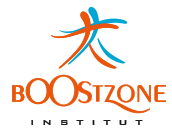WHY? Three objectives.
Let’s take some distance with the Enterprise 2.0 concept and fashion and wonder what are the real reasons why a corporation should switch to an interactive management with all its cohort of implied pain and complexity (since this is a change issue and not a fun issue). It is not only because collaborative/ interactive management is on its way to become a sort of new normal for management, due in particular to the social evolution towards more connections and social networks. More deeply, the so what is simpler than that and more profound: the collaborative mode is an essential way to improve productivity, innovation and engagement. All the rest is accessories.
HOW? Two assets have to be built
Any strategy relies on the creation of competitive advantages. Two are emerging out of a well managed interactive management model.
The first one is an “Information asset” by which a corporation becomes able to better manage information than its competitors. It implies finding information, codifying it, qualifying it, distributing it, valorizing it, combining it, towards one of the objectives mentioned above. It implies publishing, tagging, distributing, debating, validating, all those things that work infinitely better within a collaborative culture.
The second one is a “Relational asset” by which individuals interact better with each other internally and externally. It implies social networks, intelligent directories, forums, internal and external communities, etc. In short all the structures and systems allowing individuals to co-labor together.
NOTHING REALLY NEW HERE
These three objectives and these two assets were here long before the Internet (1.0 or 2.0 or whatever) BUT the mass (of information or of contacts), the speed of mobilization (of information or contacts) and the drastic reduction in transaction costs (for accessing information or contacts) are such that a whole new way of building these assets and pursuing these objectives is now necessary. Tools are available and the nice thing here is that once one knows what one wants, the tools will follow, not the contrary. The slavery to the tools is over. It does not make change simpler since all these issues involve both choices and pain. One cannot pursue all objectives at once or build these assets in one day (even one year) and one cannot build these assets without pain, all changes are painful. But the rewards could be great IF the strategic intent is not lost and pursued relentlessly.
This is what is behind the Boostzone Institute base line: “Strategic Impact Through Connected People”.
Dominique Turcq


